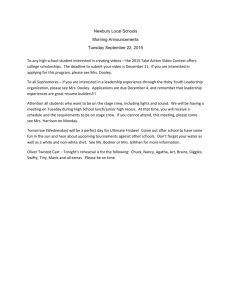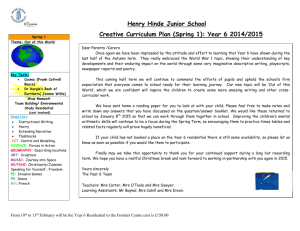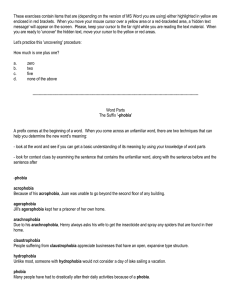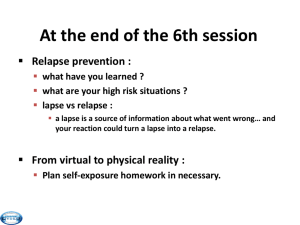Lynn Walton's Vocabulary #3
advertisement
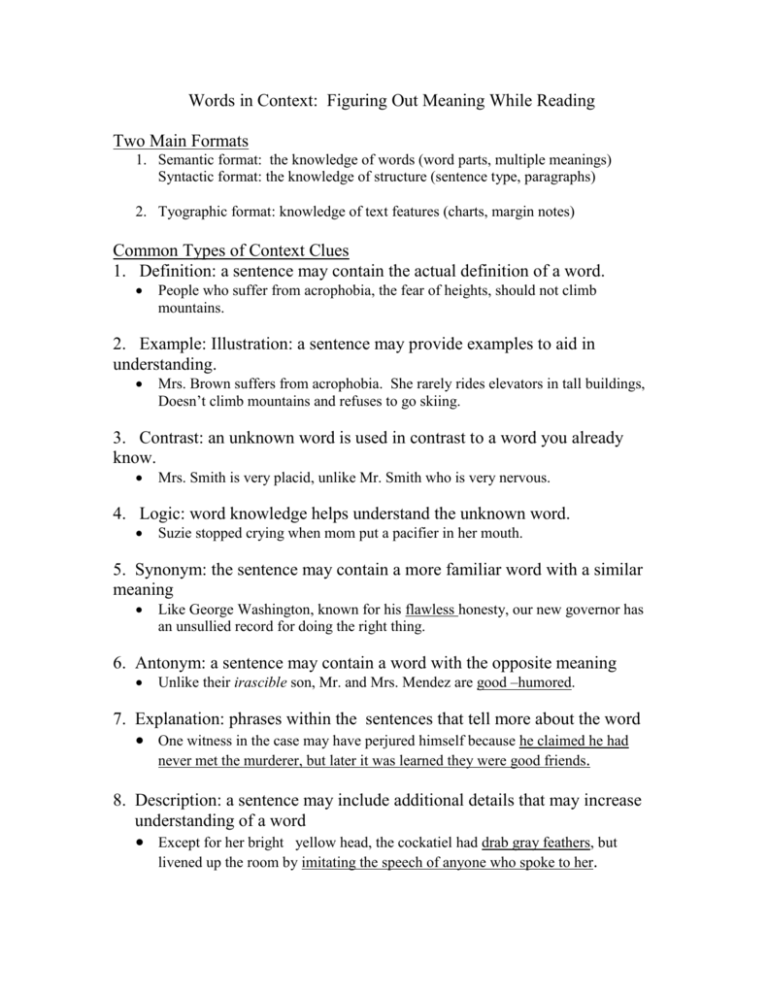
Words in Context: Figuring Out Meaning While Reading Two Main Formats 1. Semantic format: the knowledge of words (word parts, multiple meanings) Syntactic format: the knowledge of structure (sentence type, paragraphs) 2. Tyographic format: knowledge of text features (charts, margin notes) Common Types of Context Clues 1. Definition: a sentence may contain the actual definition of a word. People who suffer from acrophobia, the fear of heights, should not climb mountains. 2. Example: Illustration: a sentence may provide examples to aid in understanding. Mrs. Brown suffers from acrophobia. She rarely rides elevators in tall buildings, Doesn’t climb mountains and refuses to go skiing. 3. Contrast: an unknown word is used in contrast to a word you already know. Mrs. Smith is very placid, unlike Mr. Smith who is very nervous. 4. Logic: word knowledge helps understand the unknown word. Suzie stopped crying when mom put a pacifier in her mouth. 5. Synonym: the sentence may contain a more familiar word with a similar meaning Like George Washington, known for his flawless honesty, our new governor has an unsullied record for doing the right thing. 6. Antonym: a sentence may contain a word with the opposite meaning Unlike their irascible son, Mr. and Mrs. Mendez are good –humored. 7. Explanation: phrases within the sentences that tell more about the word One witness in the case may have perjured himself because he claimed he had never met the murderer, but later it was learned they were good friends. 8. Description: a sentence may include additional details that may increase understanding of a word Except for her bright yellow head, the cockatiel had drab gray feathers, but livened up the room by imitating the speech of anyone who spoke to her.





